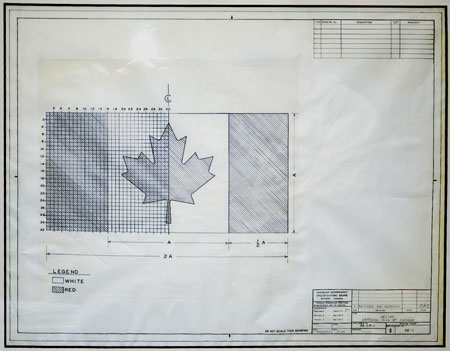Setting the standards
The National Flag of Canada, known around the world as the “Maple Leaf,” has been a symbol of Canada and Canadians since it was first officially flown on Parliament Hill February 15, 1965

The flag’s distinctiveness is so well known that the design of a central white space as a backdrop for a symbol is commonly known as the “Canadian pale.” But did you know that nearly all of the Canadian flags that fly from a federal government building must conform to stringent standards created by the Canadian General Standards Board (CGSB)?
In fact, the CGSB is responsible for ensuring that every national flag flown proudly by the Government of Canada meet the standards requirements and stands up to the test.
The story of the great flag debate and how Canada chose its national flag is famous, but less well known is the story of what happened after the Maple Leaf was unveiled. Within weeks of the flag's debut in 1964 there were issues with the colours. The red parts sections were “bleeding” into the white, and then began to fade from red to pink and then to a dull orange. Something had to be done — standards were needed!
The CGSB set to work and on June 1, 1966, the Standards for the National Flag of Canada, 98-GP-1 were published. In 1985, parliament passed the National Flag of Canada Manufacturing Standards Act, requiring all Canadian flags purchased by the federal government to conform to the CGSB standards.
Some interesting flag facts:
- The original sketch of the flag, with its proportions mapped out, is framed and in the offices of the CGSB.
- There are specific standards for the fabric, stitching, and the grommets.
- There are specific standards for the colours in the flag… even the white!
- The flag standards also specify how flags must be labelled in their packaging.
- Flags are tested in a wind tunnel at the Uplands airport facility in Ottawa, Ontario.
- There are three sets of standards for the national flag: indoor, outdoor and one-event-only (like those distributed on Canada Day).
So, next time you’re walking by a Government of Canada building, take a moment to look at those magnificent flags and take pride knowing that they are all up to standard… our Canadian standard!
- Date modified: